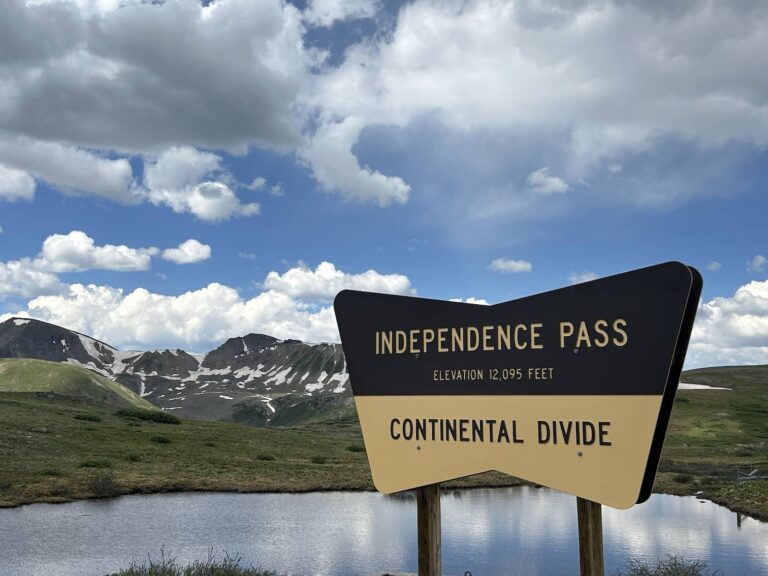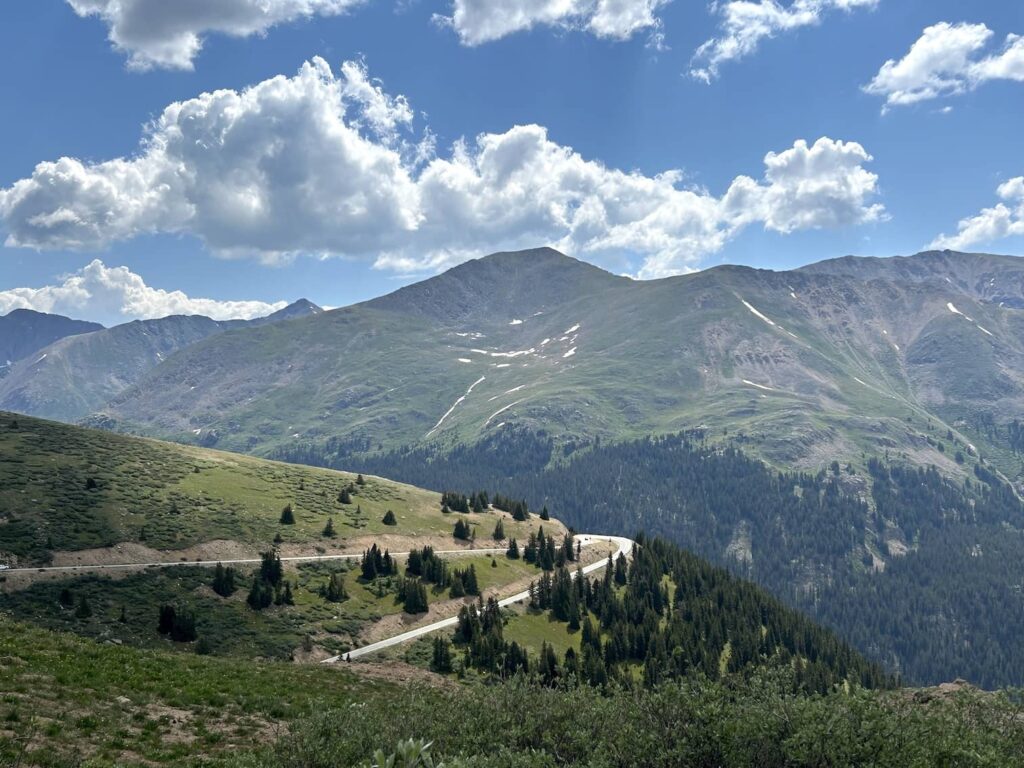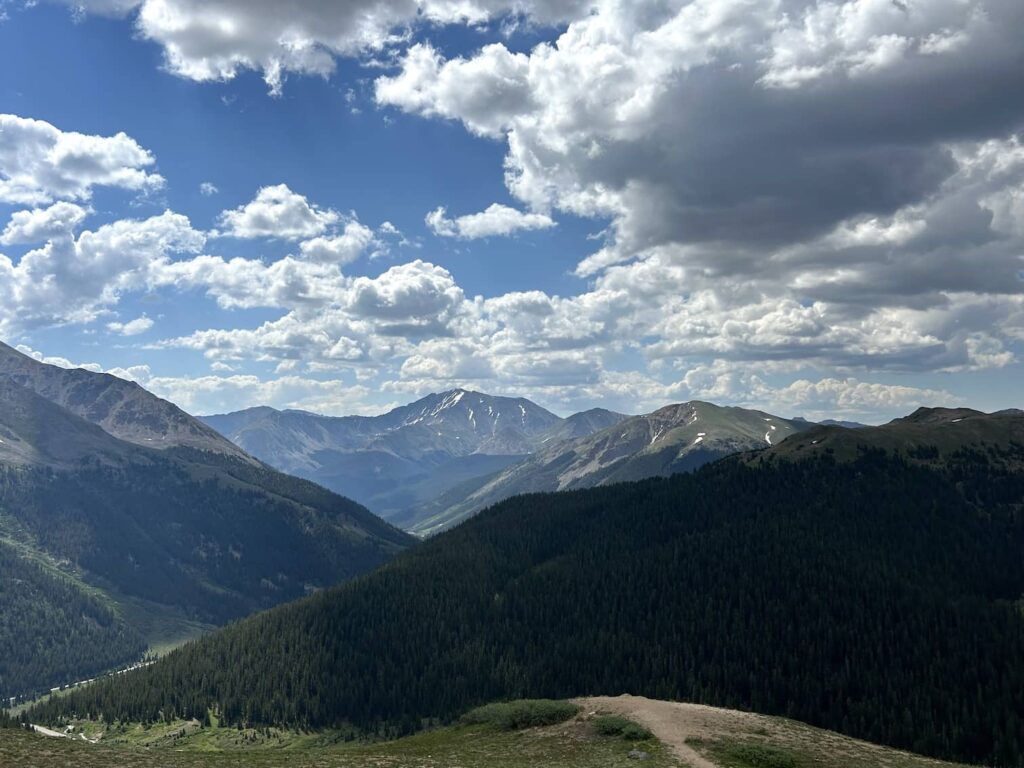
Independence Pass attracts thousands of travelers each year over the scenic mountain route that connects the towns of Aspen and Twin Lakes in Colorado. Also known as Colorado State Highway 82, it has the views, waterfalls, hairpin turns, and crowds – to rival Rocky Mountain National Park.
The pass spans approximately 32 miles from Aspen to Twin Lakes and takes about an hour to two hours to complete depending on traffic and your pace.
It’s one of the most picturesque drives in the state, offering stunning views and a little carsickness. Locals know that the traffic can be a broad mix of travelers, vacationers, road bikers, and locals just trying to get around Glenwood Canyon closures. So try to obey the speed limit, don’t go too slow (park and get out instead!) or too fast (every time you hit a marmot an angel loses a wing) and you’ll get there safely.
For the most up-to-date traffic and incident reports in Colorado, use cotrip.org. For the rest of the details you need to bring your RV over Indy, read on.
Dates open
Independence Pass is not open in the winter:
- Open: Late May (typically the Thursday before Memorial Day)
- Close: Early November (depending on weather conditions)
Always check the Colorado Department of Transportation (CDOT) website or local sources for the most current information on road status before your trip.
There are lighted blinky boards in both directions warning you of any closures or accidents.
Length and cargo restrictions
- Vehicles over 35 feet in length (including any trailers or towed vehicles) are prohibited from driving over Independence Pass due to the narrow, winding road and the tight switchbacks. If you’ve ever seen a semi-truck jackknife itself on a hairpin turn, you’ll know why there are length restrictions on this dangerous road.
- There are no specific cargo restrictions unique to Independence Pass, but general state laws apply. Ensure that all cargo is securely fastened and there are no chains dangling, as this is a major wildfire hazard.
- Horses and livestock are also allowed over the pass.
Passing
New: As of 2022, there are now traffic lights at the beginning and end of two sections of narrow one-lane road (on the Aspen side) to allow traffic to alternate passing through.
- Take care when passing in narrow areas even where it’s two lanes.
- Wait to pass bikers safely with at least 3 feet between the car and the biker.
- If you have a buildup of five or more cars behind you, pull off and let them pass.

Where to stop
- Independence Ghost Town: An old mining town with remnants of the past. It’s a fascinating historical site for a quick stop and a walk.
- Continental Divide: The pass itself crosses the Continental Divide at an elevation of 12,095 feet. There is a small parking area where you can stop, walk out roughly ¼ mile to a vista point, and take photos. There are pit toilets here, and dogs are allowed on the paved walkway on a leash.
- Grottos Trail: Located a few miles east of Aspen, this area features ice caves and cascades, making for a short but scenic hike, and if you’re feeling frisky, a literal breathtaking dip in fresh snowmelt water.
- Twin Lakes: At the eastern end of the pass, Twin Lakes offers beautiful lake views and spots for fishing and picnicking.
Best times to go
Recently, I drove over the pass at 9:30am on a Thursday in mid-July. There was typical early morning traffic, but for the majority of the drive I did not have vehicles behind me or in front of me, and I was able to easily find a parking spot at the top. By 10:15am on the other side, there were cars starting to build up at the traffic lights.
Avoid weekends and patriotic summer holidays like Memorial weekend and 4th of July – the crowds may sour your visit and the view.
My recommendation? Fall. Take a random, non-holiday weekday out of your late September schedule, and you will be able to see the most stunning fall colors in Colorado with fewer tourists and a handful of fellow leaf peepers.

More tips for RVing over Independence Pass
- Fuel up: Make sure your RV has enough fuel before starting the drive, as there are no refueling stations on the pass and gas in Aspen is expensive.
- Take it slow: The road is narrow with sharp turns and steep drop-offs. Drive slowly and stay in your lane.
- Prepare for elevation: The high altitude can affect both your vehicle’s performance and your own physical condition. Stay hydrated and check in with yourself to stay aware of altitude sickness symptoms.
- Check brakes: Gear down and save your breaks, and transition slowly to new speeds to avoid frequent increases and decreases in speed.
- Communications: Cell phone reception can be spotty. Inform someone of your travel plans and expected arrival time.
- Weather: The weather in high-altitude mountain climates can change in an instant. Be prepared for rain, snow, and heat at basically any time of year.
Animals, everywhere!
Yesterday in the span of my drive I saw multiple packs of antelope, bighorn sheep, a few marmots at the top, deer all over the place, hummingbirds, hawks, eagles, and a bear waddling across the road. Don’t feed the animals, don’t touch them, and don’t try to get up next to them for a picture. Admire them from afar with the gratitude of how wonderful nature is. And don’t forget to mark it down in your animal journal 😉
Ready to RV over Indy? Enjoy and let us know what tips we missed.






